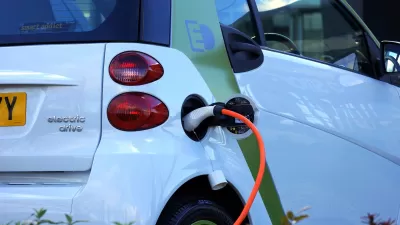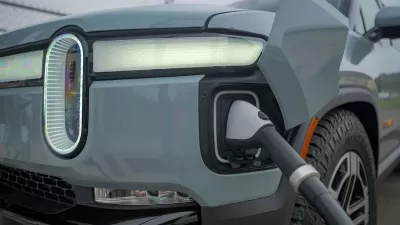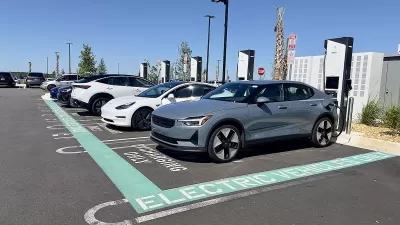The city wants to install a network of more than 3,000 charging stations, with a focus on underserved communities.

"By 2025, the city of Sacramento wants 75,000 zero-emission vehicles on the road, according to a city plan adopted in 2017," writes Isabella Bloom. "It estimates it needs 3,800 charging stations to support that kind of fleet. As of 2020, the city had installed fewer than 700 charging stations," most in dense areas near government offices and freeways. Meanwhile, rural areas and "zip codes with higher percentages of non-white residents" have the fewest charging stations.
Gil Tal, the director of the Plug-in Hybrid and Electric Vehicle Research Center at the University of California, Davis, urges prioritizing these areas. "Disadvantaged communities many times suffer from bad air quality because they are next to traffic routes or next to industry or just less desirable locations," says Tal. "Electrifying these areas are, I think, higher priority, not just because of greenhouse gases, but also because of local air pollution."
While most electric vehicle owners rely on charging their cars at home, "many low-to-moderate-income people who live in apartments or affordable housing may find installing and accessing charging infrastructure is more complicated." Encouraging more widespread EV use in these communities means providing ready access to chargers for residents of multi-unit buildings. "The city recently received a $1.8 million grant from the California Energy Commission that will allow it to provide Level 2 chargers at 13 community centers and libraries, primarily in low-income neighborhoods, including Coloma and Colonial Heights." Sacramento has also introduced an electric car sharing program "to introduce more electric cars and stations to low-income neighborhoods" and passed an ordinance that "will require new nonresidential and multifamily developments to include electric vehicle infrastructure."
Statewide, "[t]he California Energy Commission estimates the state needs 1.2 million public and shared private chargers by 2030 to support the number of electric vehicles expected to be on the road by then."
FULL STORY: Sacramento wants 3,800 car charging stations by 2025. Here’s where they’re needed

Alabama: Trump Terminates Settlements for Black Communities Harmed By Raw Sewage
Trump deemed the landmark civil rights agreement “illegal DEI and environmental justice policy.”

Planetizen Federal Action Tracker
A weekly monitor of how Trump’s orders and actions are impacting planners and planning in America.

How Atlanta Built 7,000 Housing Units in 3 Years
The city’s comprehensive, neighborhood-focused housing strategy focuses on identifying properties and land that can be repurposed for housing and encouraging development in underserved neighborhoods.

In Both Crashes and Crime, Public Transportation is Far Safer than Driving
Contrary to popular assumptions, public transportation has far lower crash and crime rates than automobile travel. For safer communities, improve and encourage transit travel.

Report: Zoning Reforms Should Complement Nashville’s Ambitious Transit Plan
Without reform, restrictive zoning codes will limit the impact of the city’s planned transit expansion and could exclude some of the residents who depend on transit the most.

Judge Orders Release of Frozen IRA, IIJA Funding
The decision is a victory for environmental groups who charged that freezing funds for critical infrastructure and disaster response programs caused “real and irreparable harm” to communities.
Urban Design for Planners 1: Software Tools
This six-course series explores essential urban design concepts using open source software and equips planners with the tools they need to participate fully in the urban design process.
Planning for Universal Design
Learn the tools for implementing Universal Design in planning regulations.
Jessamine County Fiscal Court
Caltrans
Institute for Housing and Urban Development Studies (IHS)
City of Grandview
Harvard GSD Executive Education
Toledo-Lucas County Plan Commissions
Salt Lake City
NYU Wagner Graduate School of Public Service





























